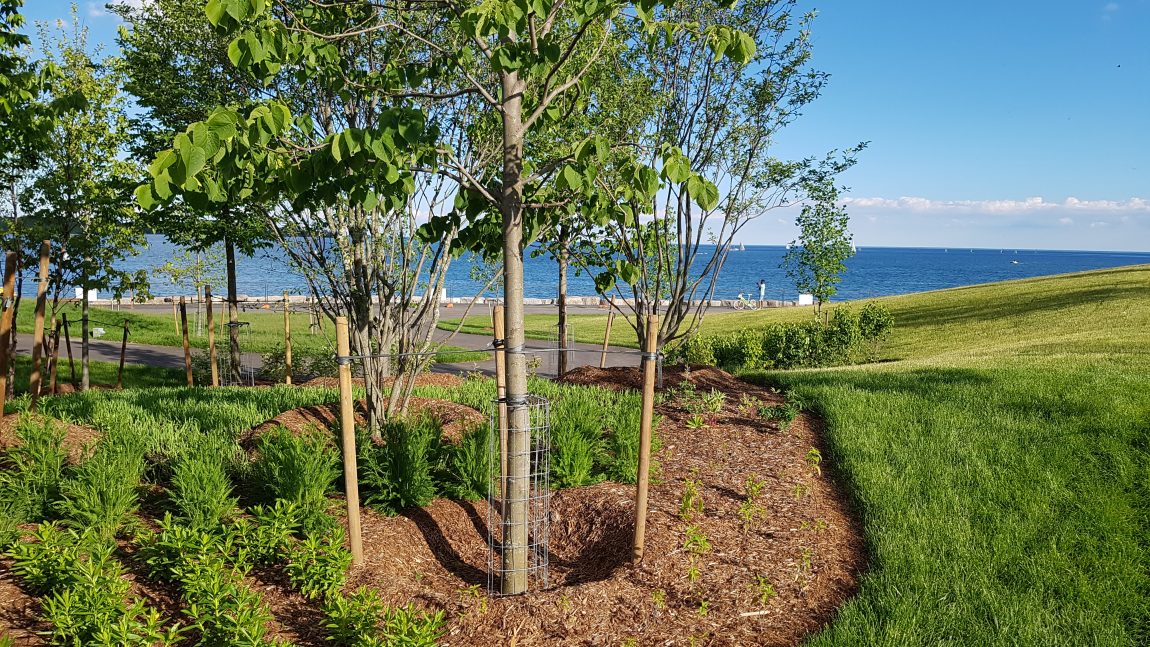The Ministry of Environment and Climate Change (MOECC) is currently developing a Low Impact Development (LID) Stormwater Management Guidance Manual. The manual will aim to clarify the ministry’s expectations with regard to LID stormwater management and related runoff volume and water quality control expectations. As a first step in the manual’s development, two research reports have been posted on the EBR registry for public comment:
- Jurisdictional Scan of Canadian, US and International Stormwater Management Volume Control Criteria
- Runoff Volume Control Targets for Ontario
The Runoff Volume Control Targets report recommends Ontario implement minimum volume control targets that would require new development and redevelopment projects to manage rainfall onsite for up to the 90th percentile rain event. This means that the first 23-32 mm of rainwater (depending on where a site is located in the province) would need to be captured and treated on site.
This is great news for green infrastructure as it will encourage stormwater management practices that utilize green infrastructure to manage rain where it falls. The report goes further in its support for green infrastructure approaches as it outlines a series of recommendations for MOECC to consider in the development of the full guidance manual.
Four key report recommendations that support green infrastructure in Ontario
The Runoff Volume Control Targets report makes the following recommendations:
- Set a goal of maintaining the predevelopment water balance to ensure the ecosystem function and natural quality and hydrological characteristics of natural features are maintained and known impacts are avoided.
- Regard rainwater as a resource which is to be managed as close to the source area as possible.
- Preferentially select stormwater management practices that:
- Begin with better site design
- Utilize natural systems and preserve existing natural systems
- Create multifunctional landscapes that achieve goals and objectives beyond stormwater management
- Contribute to water sustainability across the watershed
- Provides climate change co-benefits
- Create a mandatory control hierarchy that prioritizes stormwater management measures in the following order:
- Retention: LID measures that permanently retain rainfall volumes onsite through infiltration, evapotranspiration, and harvesting/reuse.
- LID Volume Capture and Release: LID measures that capture, treat, and release rainwater.
- Other Volume Detention and Release: non-LID measures that detain and release rainwater.
Show your support
Now is the time to communicate our enthusiastic support for using green infrastructure to manage rain where it falls. GIO will be submitting a joint response to the EBR posting and we encourage all green infrastructure stakeholders sign on.
Please click here to sign on to GIO’s joint brief by July 14th, 2017.
Click here to read the draft response.

